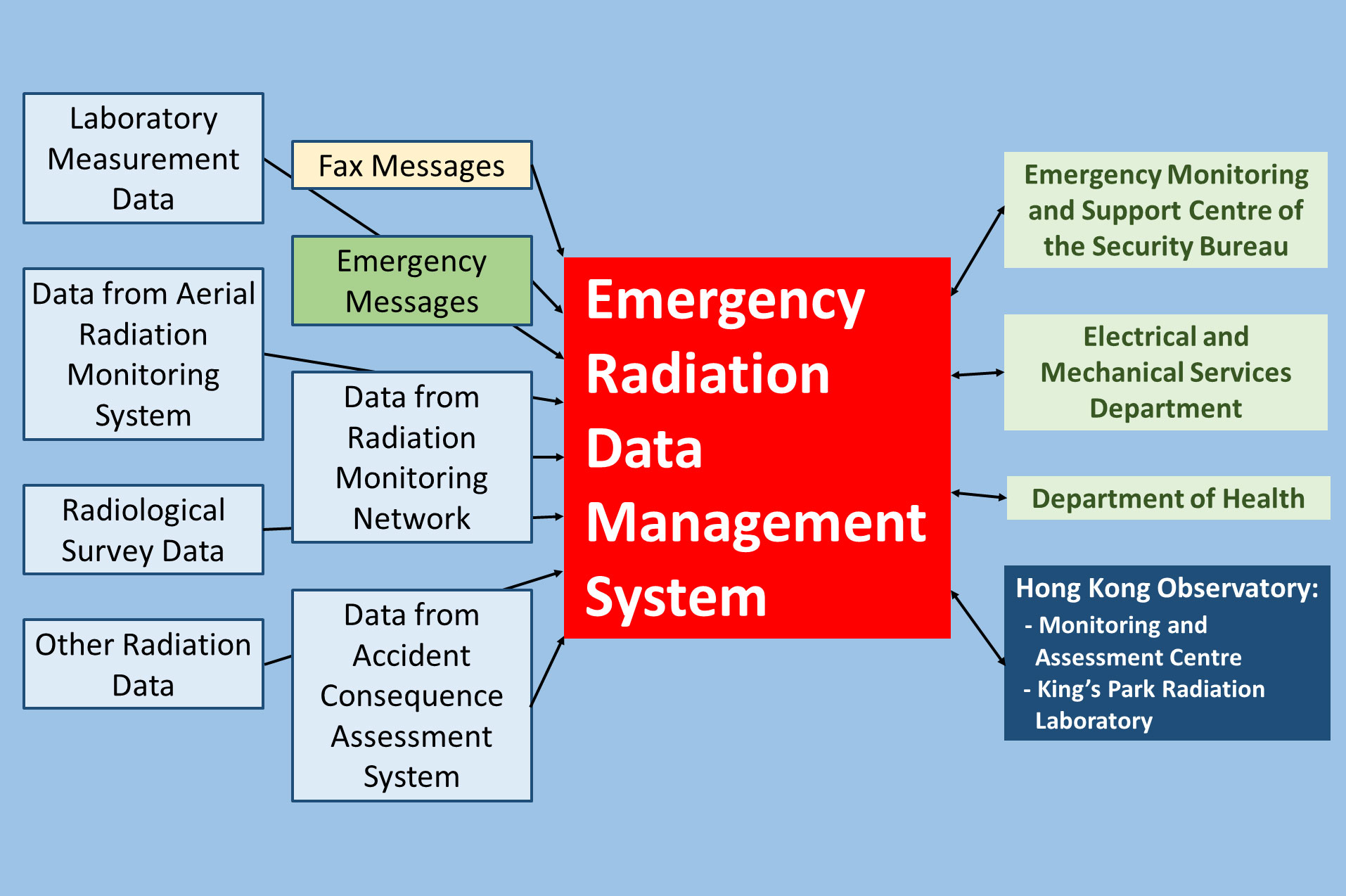How are the monitoring results processed and the nuclear accident consequences assessed?
Data collected by the Hong Kong Observatory (HKO) Headquarters include:
- environmental radiation levels in the vicinity of the nuclear power stations and information on the magnitude of the radiological release provided by Guangdong authority;
- environmental radiation levels at the fixed radiation monitoring stations and designated fire stations in Hong Kong;
- spatial distribution of environmental radiation levels obtained from the Aerial Radiation Monitoring System and radiological survey vehicles;
- environmental radiation levels from the Automatic Gamma Spectrometry System at Ping Chau in Mirs Bay;
- activity concentrations of radionuclides in foodstuff and drinking water samples;
- spectrometry measurement results of environmental samples; and
- meteorological information.
The HKO operates an Accident Consequence Assessment System (ACAS). Using information of the source term (i.e. information on the magnitude of the radiological release, including the amounts and types of the released radioactive materials, duration of the release, etc.) and meteorological conditions, the ACAS models the transport and dispersion of the released radioactive materials and estimates the radiation dose to the public in the unlikely event of a nuclear accident.
Based on the results of radiation monitoring and ACAS simulation, the HKO will, in consultation with Department of Health and Electrical and Mechanical Services Department, advise the Emergency Monitoring and Support Centre (EMSC) of the Security Bureau on necessary countermeasures.
To increase the efficiency of emergency radiation monitoring and assessment, the HKO has developed an "Emergency Radiation Data Management System (ERDMS)" to archive, process and display data and information. Apart from the HKO, other key technical support departments under the Daya Bay Contingency Plan (i.e. Electrical and Mechanical Services Department and Department of Health), as well as EMSC are connected to this system for information and tools to facilitate the decision making process.

Emergency Radiation Data Management System